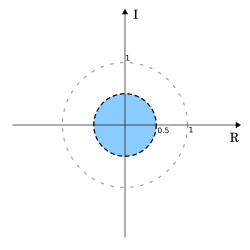Property | Time domain | Z-domain | Proof | ROC |
|---|
| Definition of Z-transform |  |  |  (definition of the z-transform) (definition of the z-transform)  (definition of the inverse z-transform) (definition of the inverse z-transform)
|  |
|---|
| Linearity |  |  |  | Contains ROC1 ∩ ROC2 |
|---|
| Time expansion |  with  |  |  |  |
|---|
| Decimation |  |  | ohio-state.edu or ee.ic.ac.uk | |
|---|
| Time delay |  with  and and  |  |  | ROC, except  if if  and and  if if  |
|---|
| Time advance |  with  | Bilateral Z-transform:  Unilateral Z-transform: [12] Unilateral Z-transform: [12] 
| | |
|---|
| First difference backward |  with  for for  |  | | Contains the intersection of ROC of  and and  |
|---|
| First difference forward |  |  | | |
|---|
| Time reversal |  |  |  |  |
|---|
| Scaling in the z-domain |  |  |  |  |
|---|
| Complex conjugation |  |  |  | |
|---|
| Real part |  |  | | |
|---|
| Imaginary part |  |  | | |
|---|
| Differentiation in the z-domain |  |  |  | ROC, if  is rational; is rational; ROC possibly excluding the boundary, if  is irrational [13] is irrational [13] |
|---|
| Convolution |  |  |  | Contains ROC1 ∩ ROC2 |
|---|
| Cross-correlation |  |  | | Contains the intersection of ROC of  and and  |
|---|
| Accumulation |  |  |  | |
|---|
| Multiplication |  |  | | - |
|---|




















































































































































































































